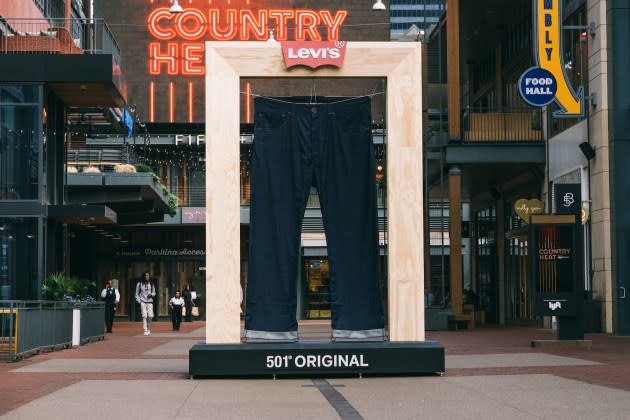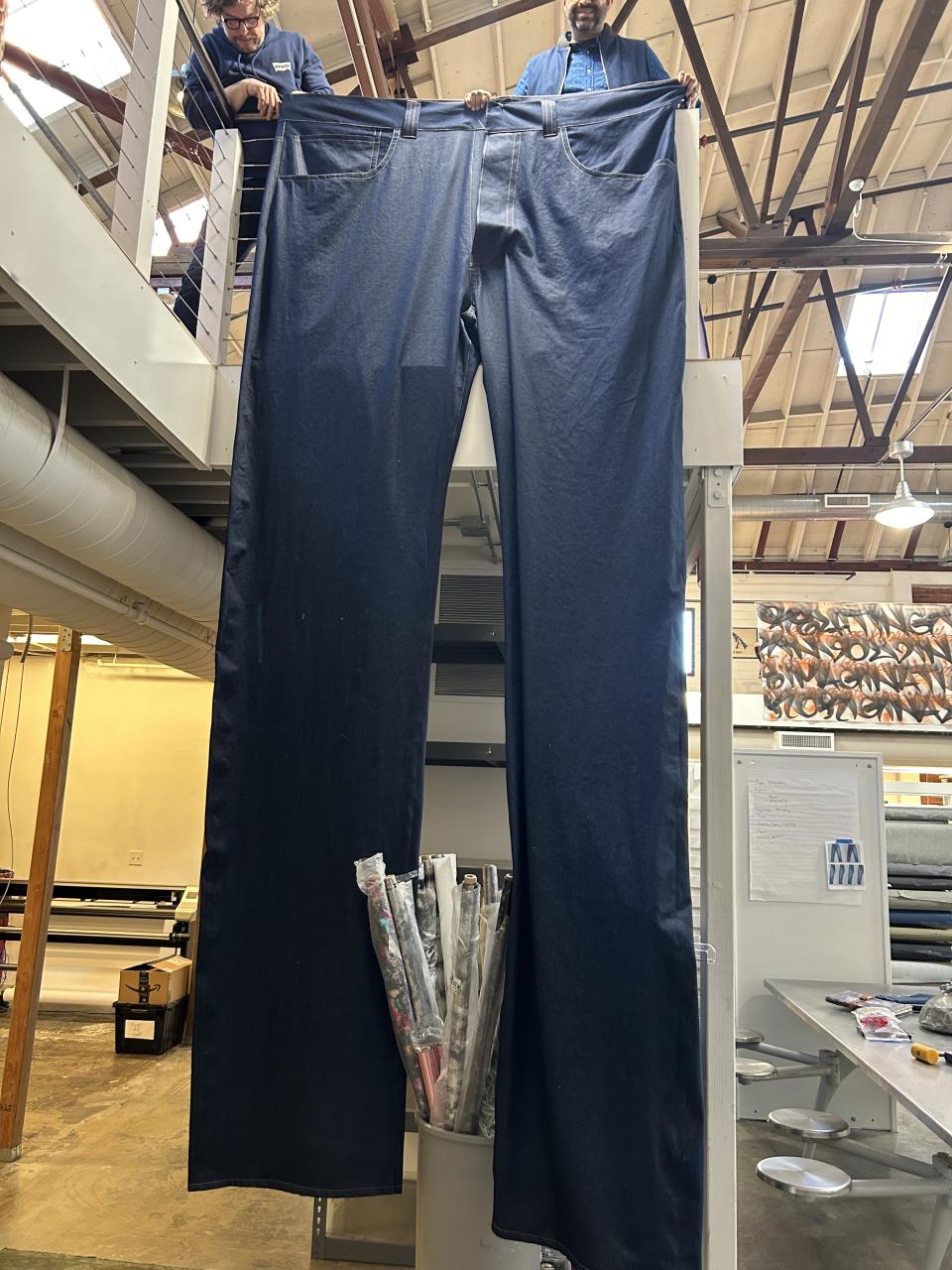Levi’s Eureka Lab Makes Giant 501 Jeans

Levi’s celebrated 501 Day—the day the world’s first blue jean received its official patent—with larger-than-life versions of the pioneering riveted pant.
The legacy brand unveiled five pairs of Giant 501 Jeans across the U.S. on Monday. Standing tall at 12 feet, the jeans are approximately five times larger than an average pair.
More from Sourcing Journal
From the Levi’s Red Tab and stitched arcuate on the back pockets to the five-button fly, leather patch and shrink-to-fit fabric, every aspect of this Giant 501 Jean is a replica of the original 501 design. While a standard pair of 501s requires 1.5 yards of denim weighing in at around 2 lbs., each pair of Giant 501 Jeans required about 15 yards of denim weighing 20 lbs.
The nostalgic novelties were created by Levi’s Eureka Innovation Lab, the 10-year-old R&D lab that has played a central role in Levi’s adoption of new technologies, water-saving strategies, digital sampling and design. While an apparel technician at Eureka can make a standard pair of jeans in about two hours, each Giant 501 Jean took three days, the brand stated.

The Giant 501 Jeans are on display at five Levi’s stores: Brickell City Center in Miami, 5th and Broadway in Nashville, Victoria Gardens in Rancho Cucamonga, Calif., Easton Town Center in Columbus, Ohio and Ala Moana in Honolulu.
To celebrate the occasion, any Levi’s Red Tab loyalty member who showed a picture of themselves in front of the Giant 501 Jeans on Monday received 40 percent off of one pair of regular priced 501 jeans at the participating stores.
Big jeans are in. Earlier this year a 12-foot-tall Levi’s display ad from the 1940s was sold at auctioned for $15,600. The ad is believed to be one of two surviving “Levi’s Giant” advertisements.
In January, Turkish mill Orta partnered with Wouter Munnichs, founder of Long John, to turn 27 yards of sustainable fabric into a size 133×130 jean. Called “The Biggest Sustainable Jeans,” the project was an homage to the large displays Levi’s, Wrangler and Lee made to promote their products beginning in the 1920s. The jean was presented at Bluezone in Munich.

